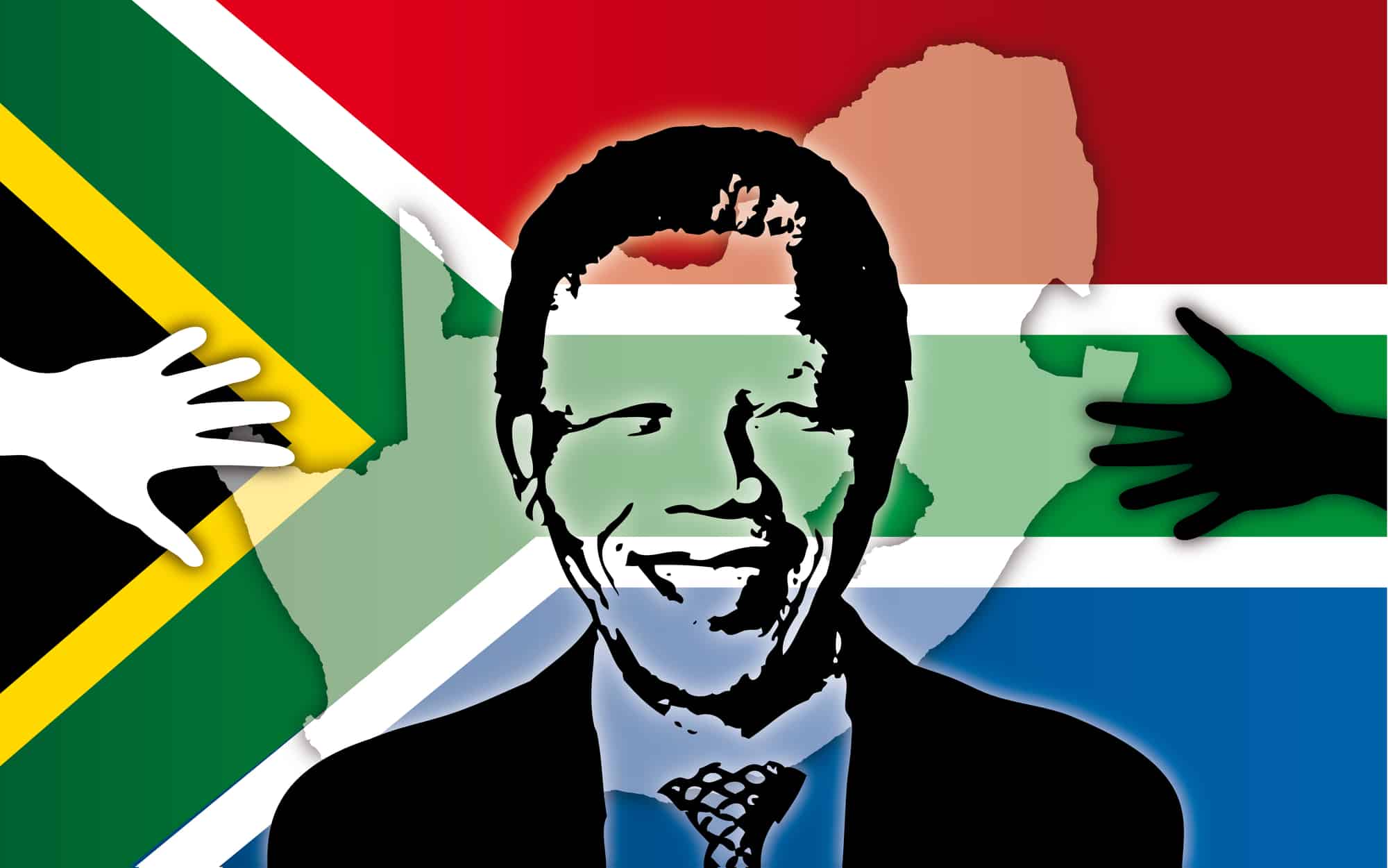Nelson Mandela was a South African human rights and political activist. Through peaceful protests and armed resistance, he fought against racial segregation that plagued the country for 50 years. As a result of his actions, he spent almost three decades in prison. But after his release, he won the Nobel prize and became the president of South Africa. Thereafter, he fought hard to end the racial discrimination in South Africa and improve the living standards of its citizens. In this biography of Nelson Mandela, find out how he transformed South Africa.
History of South Africa
To understand who Nelson Mandela was and what he did for South Africa, we must first understand South Africa's history and what led to the hostility between different races there.
Until the seventeenth century, various ethnic and linguistic groups lived in South Africa. These people were primarily hunters, gatherers, fishermen, shepherds, and farmers. For centuries they lived in small groups of 20 to 80 families which were related by blood or marriage. Over time, these small groups joined together to form bigger communities.
The arrival of the Dutch
In 1652, ships of the Dutch East India Company landed at the Cape of Good Hope. The Cape of Good Hope is a southwestern port in South Africa. Their goal was to set up a resupply station for their ships traveling from Holland to their colonies in Asia. So, they had no interest in colonizing or establishing European settlements in South Africa. All they wanted was to acquire goods for their ships. But the local ethnic people of South Africa refused to sell the goods under the company's conditions. So, the Dutch got annoyed and started a battle against the local groups.
After winning the battle, the Dutch drove the local people who lived near the port into the interior of South Africa. They gave the farmlands they seized from the locals to the former employees of the company. Thus, these former employees of the Dutch East India Company became the first European farmers and settlers in South Africa. These people called themselves Boers. They were mostly Dutch, but there were some French and Germans too. To work in these farms, the company imported slaves from other parts of Africa.
The Boers
The Dutch East India company forbade the Boers from selling their supplies to anyone other than the company. This affected the profits of the Boers. So, even though the Dutch East India Company made the Boers settle in South Africa, they eventually got fed up with the company. Therefore, they tried to escape its monopoly by expanding into South Africa. But the company forbade the Boers from expanding. It also ended the emigration of Europeans into South Africa. To cope with the demand for agricultural labor, the company started importing more slaves instead. So, the Boers started hating not only the company but also their black slaves. Thus the enmity between the blacks and whites began.
The arrival of the British
At the beginning of the nineteenth century, Britain became concerned that Nepolean might capture the Cape of Good Hope. If that happened, it would lose control of its sea route to South Asia. So, it captured the Cape of Good Hope, which was in control of the Dutch until then. Like the Dutch, the Britishers had no interest in colonizing South Africa. Their main aim was to resupply their ships going to South Asia. But they still needed a community loyal to Britain. So, they started importing Britishers to settle in South Africa.
Moreover, wanting to end racial discrimination, Britain began punishing white owners who assaulted their Black slaves. It also started freeing the Black slaves in its vast empire. So, scared of losing their black slaves, the Boers started moving to the interior of South Africa and expanding there. There, they set up two republics, called the South African Republic and the Orange Free State.
Important events that changed South Africa
Even though Europeans had started settling in South Africa in the seventeenth century, until the 1860s, most of South Africa was still occupied by African people who lived in small communities. This was because neither the Dutch nor the British wanted to colonize South Africa. But all this changed in 1867 when Diamond was discovered in South Africa. 19 years later, gold was also discovered in South Africa. So, South Africa, which until then nobody cared about, suddenly became the center of the world. The discovery of gold and diamond reserves in South Africa exceeded those in any other part of the world. So, it started to attracted foreign investments.
The Britishers wanted to keep the gold and diamond mining in South Africa profitable. So, they needed inexpensive labor. Therefore, they levied heavy taxes on their black workers and made the working conditions terrible. They also conquered the areas of South Africa that were not under the control of Boers. This led to tension between the Blacks and the Whites in South Africa.
The Boers vs. the Britishers
The Boers, on the other hand, had no investment potential. So, they couldn't get any share of the profits from the mining business.
Therefore, even though the mining sites were mostly located in the areas controlled by the Boers, the Britishers, who had money to enter the mining business, ended up owning almost all the mines. Moreover, all the profits from mining were taken to Britain and were not reinvested in South Africa. So, the Boers went to war with the Britishers in 1899. In this war, called the South African War, which lasted for three years, the Britishers defeated the Boers. But most of the white population in South Africa were Boers. So, the Britishers realized that they can neither completely win against the Boers nor rule South Africa without their help. So, they made long-term peace settlements with the Boers and decided to install a White government in South Africa.
The Union of South Africa
Therefore, in 1910, Britain combined all the areas owned by the Britishers and the Boers and created a self-governing state within its Empire called the Union of South Africa. In this new country, the white people took up all the positions in the government. The Blacks in South Africa did not even get any voting rights. Furthermore, only white people could hold skilled jobs in the mining industries. In addition to that, the newly formed government forbade Black people from buying land from White people. As a result, the native African Black people, who constituted almost 90% of the South African population, were forced to live in just 7.5% of the land. This ensured that the Blacks in South Africa would not be able to farm anymore.
So, the Blacks started seeking jobs from white employers. Even though these jobs were the lowest-paid ones, they couldn't do anything because they had no right to vote. So, since most of the Africans could no longer provide for their families, the country started succumbing to problems like inequality, landlessness, and poverty, which are prevalent even today.
The two major parties
To fight against this injustice against the Blacks in South Africa, the African National Congress was formed in 1912.
When the Britishers fought against the Boers in the South African War, they had taken the land that the Boers had ruled over. But even after the war was over, the Britishers did not return this land to them. So, many of them lived in poverty and had to compete with the Blacks for low-paying jobs. Therefore, to address their concerns, the Afrikaners, which is how the Boers started calling themselves after the war, formed the National Party.
Ancestors
One of Nelson Mandela's great grandfathers was Ngubengcuka. He was the king of the Thembu people, who lived in the Southeastern part of South Africa. Nelson Mandela's grandfather was the son of the king and a woman from a clan of lesser royalty. According to the Thembu law, children of such lineage were not permitted to become heirs to the throne. But they could become royal councilors. So, Nelson Mandel's grandfather became a royal councilor. Following in his footsteps, Nelson Mandela's father, Gadla Henry Mphakanyiswa Mandela, became the king's counselor too.
Childhood
Birth
Nelson Mandela was born as Rolihlahla Mandela to Gadla and his third wife, Nosekeni Fanny, on July 18th, 1918. Rolihlahla translates to 'troublemaker' in the local language. Rolihlahla was born at a time when racial inequality and poverty were prevalent in South Africa. So, growing up, he witnessed the injustice committed against the Blacks in their own country.
Early Life
Rolihlahla was born in the tiny village of Mvezo in South Africa. His father was initially a local chief. In 1915, the white magistrate sacked the principal counselor to the king of Thembus on charges of corruption. So, the king gave Rolihlahla the position. A few years later, Rolihlahl's father was also sacked for the same reason, and his possessions were taken away. So, his family moved from Mvezo to an even smaller village called Qunu.
Qunu had no roads. It only had footpaths. Rolihlahla's family lived in huts in this small village. Since they were very poor, they could only afford meals made of maize, beans, and pumpkins, which grew in the village. Rolihlahla spent the first few years after coming to Qunu playing with other boys of his age and tending to cattle.
Education
Rolihlahl's parents were both illiterates. Moreover, they were living in poverty. Yet, despite their shortcomings, they sent him to school. Thus, Rolihlahla became the first person in his family to go to school.
Primary schooling
Due to the bias created by the British educational system, the Christian school in which he studied had a custom of giving Christian names to African pupils. Keeping in line with this custom, Rolihlahla's teacher gave him the name Nelson. Thus, Rolihlahla Mandela became Nelson Mandela.
Interest in African history
Several years earlier, Mandela's father had recommended the current king of the Thembus to that position. So, the current king was indebted to Mandela's father. Therefore, when Mandela's father died when Mandela was twelve years old, Mandela's mother took him to the palace. The king immediately let him stay at the palace. Thus, Mandela ended up growing up with the king's children.
In the school near the palace, Mandela learned English, History, and Geography. The elders who came to the palace told him stories of how his ancestors lived peacefully until the arrival of the Europeans. They explained how their ancestors lived in harmony with each other and shared the air, water, and land with each other. However, the White people came and took everything for themselves. After listening to these stories, he fell in love with African history. However, despite listening to these stories, Mandela did not hate the White people at that age. Instead, he considered them as saviors who brought education and other facilities to South Africa.
When Madela was 16 years old, he took part in the circumcision ritual, which is still prevalent among several South African communities. The traditional practice marks the entrance of a boy into manhood. It is not just a ritual but a mandatory custom, without which a man cannot marry or inherit wealth. Moreover, uncircumcised men were bullied and ridiculed in these communities, which is true even today. So, despite the ritual being dangerous and being performed by inexperienced doctors, Mandela, who wanted to honor his ancestors' customs and undertake the journey from boyhood to manhood, took part in the ritual along with 25 other boys.
Secondary and higher secondary schooling
Mandela intended to take up the position of the royal counselor. So, after the ritual ended, Mandela started his secondary schooling. He did his secondary and higher secondary schooling at prestigious institutes. During this time, Mandela learned to work hard and socialize with people. He also excelled at boxing and long-distance running. In the final year of higher secondary, he also became the prefect. During these years, his love for African history increased even more.
University life
After finishing his schooling, Mandela enrolled at the University of Fort Hare in 1939 to study BA. The University of Fort Hare was a very prestigious university and attracted the brightest students from all over the continent. Mandela intended to become a clerk or an interpreter. At that time, these were the best professions a Black man in South Africa could get. So, he took subjects like English, politics, and native administration, which would help him land his dream job.
In the university, Mandela had friends who supported the African National Congress, which wanted to end the British rule in South Africa. However, Mandela himself didn't support them yet. On the contrary, he supported the British and even their decision to go to war during the second world war.
In his second year at the university, Mandela was elected as a member of the Students Representative Council. At that time, the quality of food at the university was bad, and the SRC (Students Representative Council) didn't have enough power. So, supporting the students' cause, Mandela boycotted the university and resigned from the SRC. However, the university saw this as a way of revolting and expelled him for the rest of the year. It agreed to let him continue his studies only if he served on the SRC again. But Mandela did not agree to the university's conditions. So, the university sent him home.
When he returned home, the king asked Mandela and his own son to give up on their revolt, return to the university, and continue their studies. When they refused, the king arranged marriages for them. So, feeling trapped and with no other option left, they ran away from home.
Political Awakening
Mandela ran away to Johannesburg, where he worked as a night watchman. But his boos fired him when he came to know that he had run away from home. Thereafter, he found work as an articled clerk, which was like an intern position in a law firm. During this time, he experienced poverty, racism, crime, and pollution, that South Africa was rife with. So, the ANC and the communist party, which were fighting against these problems, caught his attention. Therefore, he started attending communist party gatherings. He was amazed at how the Africans, Europeans, and Asians got along well at these communist party gatherings, despite racial discrimination being prevalent in South Africa.
Joining the African National Congress
Meanwhile, Mandela also started taking a correspondence course to finish his BA. After passing his BA exams, he abandoned his dream of becoming a royal counselor and decided to become a lawyer instead. So, in 1943, he enrolled at the University of the Witwatersrand in Johannesburg to study law. While studying at the university, Mandela was the only Black student, and hence, he faced racism. Therefore, he joined the ANC, which wanted to make South Africa free of racism.
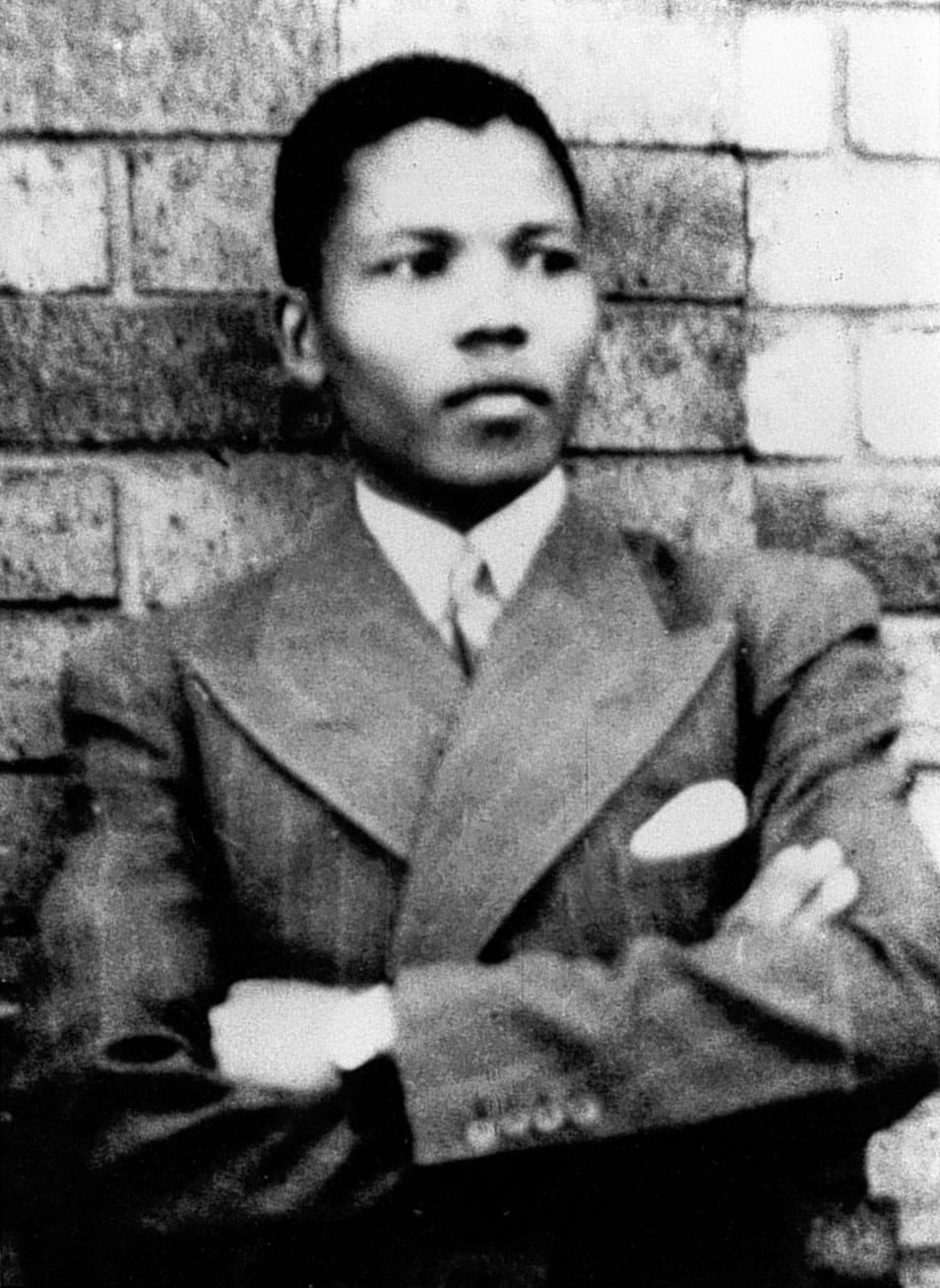
A picture of young Nelson Mandela, 1937 -By Unknown authorPublic Domain, Link
Forming the ANC's youth party
The majority of the South Africans were Blacks. ANC was a party that was fighting for their rights. Yet, it did not have the mass support of these Black people. So, Mandela and other members of the ANC formed the African National Congress Youth League in 1944. Their motive was to convert the ANC into a mass movement in South Africa that could get the support of millions of poor Black farmers and miners and become their voice.
The same year, Mandela met Evelyn Mase, who was an ANC member and a trainee nurse. Soon, they started liking each other and married in October. Together, they had four children.
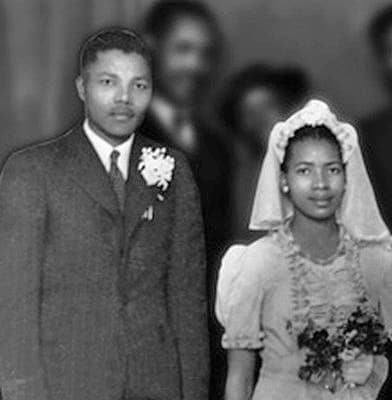
Mandela and Evelyn, 1944 - By The original uploader was André Koehne at Portuguese Wikipedia. - Transferred from pt.wikipedia to Commons by Truu., Public Domain, Link
Anti-Apartheid Movement
From 1934 to 1948, South Africa was ruled by the United Party. Under its rule, South Africa participated in the second world war on the side of Britain.
During the war, many Whites joined the army and went to war. But this led to shortages of white manpower in industries in urban areas in South Africa. So, Blacks started moving from rural areas to urban areas to take up these jobs. When the war ended, and the Whites returned to their homes, there were severe food and housing shortages. Moreover, South Africa had loaned Britain 250,000 pounds of gold. As a result, South Africa's economy shattered and led to inflation. Due to the dwindling economy and the increasing number of Blacks in urban areas, the Afrikaner became more and more concerned that the Blacks might steal their jobs. However, the United Party realized that, at some point of time in the future, they have to make the country friendly to the Blacks too. So, it campaigned for a policy of integrating Blacks into society.
The National Party wins the 1948 general elections
On the other hand, the National Party campaigned on segregating the Blacks from society. By doing so, it would be able to improve the job opportunities and living conditions for the Whites.
The Blacks in South Africa were not permitted to vote. Only the Whites could vote and the majority of them were Afrikaners, descendants of Boers. So, since the National Party's policies appealed to the Afrikaners, the National Party won in the 1948 General elections and became the ruling party.
The Apartheid Regime
Immediately upon its ascension to power, the National Party started implementing its policy of Apartheid. Apartheid, which means Separateness in Afrikaans, was a policy that increased white supremacy in South Africa. The Blacks, who already faced racial discrimination in their own country, now faced even stricter restrictions. According to the Apartheid, the Blacks should only work in areas designated for them. They should not open a business or hold a profession in areas designated as White South Africa. Under exceptional cases, if his services were absolutely necessary, a Black person could get a pass to work in White South Africa. If a Black was found without a pass in White South Africa, he was often arrested.
Blacks may not use the hospitals meant for Whites. Since Whites were the minority in South Africa, the White hospitals had fewer patients, more funds, and better doctors. Black hospitals, on the other hand, were severely overcrowded, underfunded, understaffed, and had less-qualified doctors. Just like hospitals, trains, ambulances, parks, graveyards, and public toilets were also segregated. Moreover, Blacks were also not permitted to marry White people.
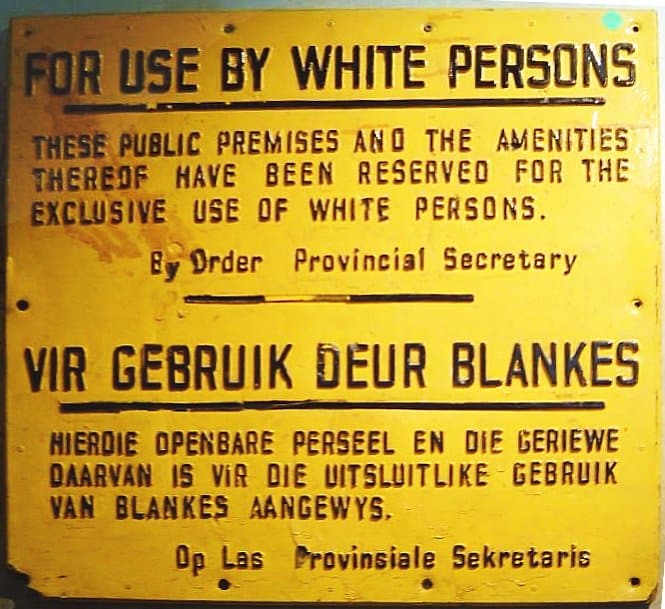
An Apartheid sign - By Dewet - Derived from Aprt.jpg on en.wiki, corrected perspective and lighting somewhat. Permission from photographer here., Public Domain, Link
Due to its inhuman practices, the Apartheid soon attracted international criticism. The United Nations even implemented arms and Trade bans against South Africa. But despite facing severe opposition inside and outside the country, the National Party did not give up on its Apartheid policy.
The ANC's initial action against Apartheid
Since Blacks could not vote, they had nobody who could represent them. So, the ANC adopted the policy of polite petitioning to protest against misdeeds committed against the Blacks. But Nelson Mandela and the ANCYL (African National Congress Youth League) felt that only a more aggressive approach would bear results. So, in 1949, the ANC adopted its Youth League's aggressive methods of non-cooperation and boycott against the government.
With time, Mandela became more and more involved in politics. So, he had less time to concentrate on his studies. Therefore, he failed his final year three times, and finally, in 1949, the university denied him the degree.
Becoming the president of the youth wing
In 1950, Mandela became the president of the youth wing of ANC.
During Mandela's time, people of four different races lived in South Africa - Black, White, Asian, and Coloured. People whose ancestors belonged to more than one race were classified as Coloured.
Even though Mandela wanted to eradicate racism, he wanted the Black people to be independent in their fight for justice. So, he opposed the idea of Blacks joining hands with other races, like Indians and colored people, and people of other radical beliefs, like communists. So, in 1951, in the ANC national conference, he argued that Blacks should fight alone against the White minority rule. But he was soon outvoted. So, thereafter, he started embracing the concept of a racially united front. His opinion of communism also changed when the Soviet Union started supporting the countries fighting for independence. So, he started reading the books of famous communist figures like Lenin, Stalin, and Mao.
Protest against Apartheid
In the following year, ANC, in unison with Indians and communists, started preparing for a defiance campaign against the government. So, Mandela spoke at a gathering of 10,000 people and incited protests. In return, the government conducted mass arrests. Even Mandela himself was arrested and faced trial. Even though the sentence awarded to him was suspended, he was banned from speaking publicly. However, these measures taken by the government only made Mandela a prominent figure in South Africa. As a result, the membership of the ANC grew from 20,000 to 100,000 members.
Mandela's marriage life fails
Meanwhile, Mandela passed the qualification exams to become an attorney. Thereafter, he opened a law firm with his friend Oliver Tambo. Since it was the only black law firm in the country, it was always full of Blacks who were mistreated by the Whites. However, the government soon canceled its license. Therefore, Mandela moved his law firm to an undisclosed location.
But the protests and the law firm made Mandela politically famous and extremely busy. So, he started spending less time with his wife. Moreover, they had different political views, and Mandela allegedly had affairs with other women. So, their relationship started going downhill. Finally, in 1958, they got divorced. The same year, he married a social worker called Winnie Madikizela.
Decision to use violence
Inspired by the non-violent resistance organized by Mahatma Gandhi against British rule, the ANC initially followed the same technique against the White minority rule in South Africa. Mandela supported these non-violent protests. However, their protests ended in failure. So, in 1955, Mandela decided that violence was the only way to end the white minority rule and their apartheid system. Following his advice, ANC requested weapons from China, which China denied.
One year later, Nelson Mandela and 156 others who opposed the Apartheid system were arrested. They were charged with committing high treason against the country. Even though they were granted bail, the trial went on for another 6 years.
Symbol of resistance
Those days, Africans had to show their passes if they wanted to leave the areas allocated for their stay and enter other areas. The pass would reveal if the African had permission to enter the area he wanted to enter. Only those Blacks and people of other races who had the permission could enter areas designated for white people. Thus, the pass greatly restricted Blacks' movement within their own country.
So, in 1959, as a way of showing non-compliance, political parties launched a mass movement, asking people to burn their passes. As a part of this movement, Mandela also burned his pass publicly. In one of these peaceful demonstrations, the police fired, killing 69 people. This attracted a lot of international criticism for South Africa's white minority rule. The massacre also deteriorated the ANC's already bad relations with the South African government. So, the South African government blamed the ANC for being a communist party and banned it.
The Union of South Africa had become a sovereign nation under British rule in 1934. So, it was still answerable to the British. In 1960, the majority of Whites in South Africa voted to make the country an independent nation. So, the Union of South Africa cut all ties with the British government, officially gained independence, and became the Republic of South Africa on May 31st, 1961. Thus, the country had now become a Republic, a country ruled by representatives elected by the people. Ironically, most people in the country had no say in who ruled the country or how they ruled it.
To mark South Africa's independence, ANC planned and conducted several stay-at-home strikes. These strikes crippled South Africa's economy because the workers refused to go to work.
The cell structure
In 1953, Nelson Mandela had proposed a cell structure to protect the ANC. It was a plan which would come into effect in case the government banned the ANC. It involved restructuring the ANC, a very big group, into many smaller cells. Members in the cell would know only the identity of other people in the cell and not anyone else. They would not know the identity of their superiors. Thus, if a member got caught, only people in the same cell as him would be caught, thus protecting the identity of everyone else. So, even if ANC was banned, people could continue working as ANC members since their identities wouldn't be revealed.
Founding the armed wing of the ANC
In 1961, the verdict of the treason trial from six years before came, and Nelson Mandela was not found guilty. So, disguised as a chauffeur, he traveled through the country, gathering support for the stay-at-home strikes. Simultaneously, he also started implementing ANC's cell structure. He also co-founded the Umkhonto we Sizwe (Spear of the Nation), the armed faction of the ANC. He gained motivation for it by reading books of leaders of Guerilla Warfare, like Che Guevara and Mao Zedong. This group planned to bomb military installations, powerplants, etc., instead of waging full-scale guerilla warfare.
Prison
5-year sentence
In 1962, ANC sent Nelson Mandela to attend the pan-African freedom movement held in Ethiopia. Nelson Mandela left South Africa secretly and took part in the delegation. He also visited many countries and gathered funds for ANC. However, upon his return, the South African government arrested him. Charged with leaving the country illegally and inciting people to protest, the court awarded him a five-year sentence.
Life imprisonment
However, one year later, the police conducted a raid, in which they found evidence supporting Mandela's involvement in the bombings. So, in 1964, the court awarded Mandela and 10 others life-sentences, to serve in prison until they died or were pardoned.
In prison, Nelson Mandela was initially treated as the lowest grade prisoner. He was not allowed to read newspapers and was allowed a visit and a letter only once every six months. There was even a plot to let him escape so that they could shoot and kill him while he escapes. But, thanks to British intelligence, the plan was averted.
Gradually, the conditions in prison improved. The quality of the food improved greatly. Moreover, Mandela was permitted to have frequent visits and letters. Meanwhile, Mandela started studying law by correspondence and writing his autobiography.
Release from prison
By the time he turned 60, in 1978, Mandela was internationally famous for his fight against the apartheid system. So, several universities across the world offered him honorary degrees. By 1980, international support for Mandela had risen to such a degree that United Nations called for his release.
Meanwhile, violence increased in South Africa due to a variety of reasons. So, the then-leader of the National Party and president of South Africa, P. W. Botha, offered to release Mandela. In return, he asked Mandela to renounce violence. However, Mandela refused and stayed in prison. But even though Mandela remained in prison, support for him started increasing both inside and outside the country. However, Botha still refused to release Mandela as they couldn't reach any deal. In 1989, Botha suffered a stroke. So, he resigned. The man who replaced him was F. W. de Klerk. Klerk considered the Apartheid system unsustainable anymore. So, he released Mandela in 1990 without any conditions. He also legalized all the political parties which were banned earlier and granted freedom of the press.
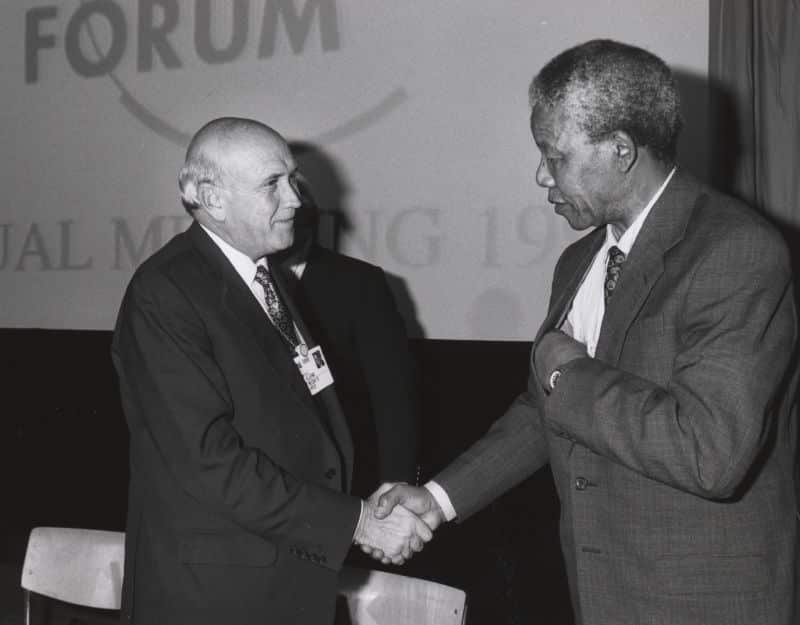
Nelson Mandela and De Klerk, 1992 - By Copyright World Economic Forum (www.weforum.org) - Frederik de Klerk & Nelson Mandela - World Economic Forum Annual Meeting Davos 1992, CC BY-SA 2.0, Link
Nobel Prize
After his release from prison, Mandela declared that their armed struggle will continue until Blacks get the right to vote. In 1991, the ANC elected Mandela as its president.
Throughout the 1970s, atrocities committed by the Apartheid government against the Blacks became internationally known. So, humanitarians in Europe and America started pressurizing their governments to impose economic sanctions against South Africa. As a result, in 1986, the USA imposed economic sanctions against South Africa and demanded that it end the apartheid system for the sanctions to be lifted. Following this move by the USA, many multi-national companies moved their offices away from South Africa.
Until then, South Africa had portrayed the Apartheid system as being anti-communist. So, there was support for the system. But with the end of the cold war in 1991, this claim became obsolete, and many anti-communists worldwide withdrew their support for the Apartheid system.
Moreover, tensions inside the country rose steadily due to internal protests and revolts. In addition to that, after his release from prison, Mandela traveled to many countries encouraging them to impose sanctions against the Apartheid system.
Therefore, succumbing to mounting tensions, the white minority government, led by de Klerk, ended the Apartheid system in 1991. So, in 1993, Nelson Mandela and Frederik Willem de Klerk got the nobel peace prize for ending the Apartheid system in a peaceful manner.
The first black president of South Africa
Over the next few years, the ANC and the National party held various talks. They wanted to come to an agreement on how to end the violence in the country and create a government so that neither the majority nor the minority feels abandoned. As a result of these talks, South Africa became a democratic nation in 1994. Nelson Mandela became its first president. During his stint as the president, Mandela worked hard to create a Black majority rule. But he did not want the minorities, especially the Whites, to feel left out. So, he appointed de Klerk as his deputy.
But even after that, the Blacks and the Whites were still divided.
So, to bring them together, he started promoting rugby and supporting the national rugby team. Due to the country's combined interest in sports, this move initiated a reconciliation between different races. He also worked hard to host the Rugby world cup in 1995, which brought international recognition to South Africa. But more importantly, it brought the different races together by establishing a sport that everyone could be proud of.
Over the next few years, he used government funds to improve the country's healthcare, education system, housing, and employment opportunities. As a result, between 1994 and 1999, 750,000 new houses were constructed, 500 clinics were built or upgraded, 1.5 million children started their education, 3 million people got water access, and 3 million people got access to telephones. But despite bringing all these improvements, Nelson Mandela stepped down from the presidency in 1999. He did not seek a second term in office.
After retirement
By 1999, 10% of the people in South Africa suffered from AIDS. So, after retiring, Nelson Mandela set up a charity called the Nelson Mandela Foundation. Through it, he raised money to build schools and clinics and combat AIDS. Thus, even after his retirement, he worked extremely hard to improve the quality of life in South Africa.
In 2004, he retired completely from public life and returned to Qunu, his native village. After that, he remained mostly away from public view until his death, even though he made occasional public appearances.
Death
In his last years, fighting a recurrent lung infection, he was hospitalized multiple times. Finally, on December 5th, 2013, he died due to the same infection.
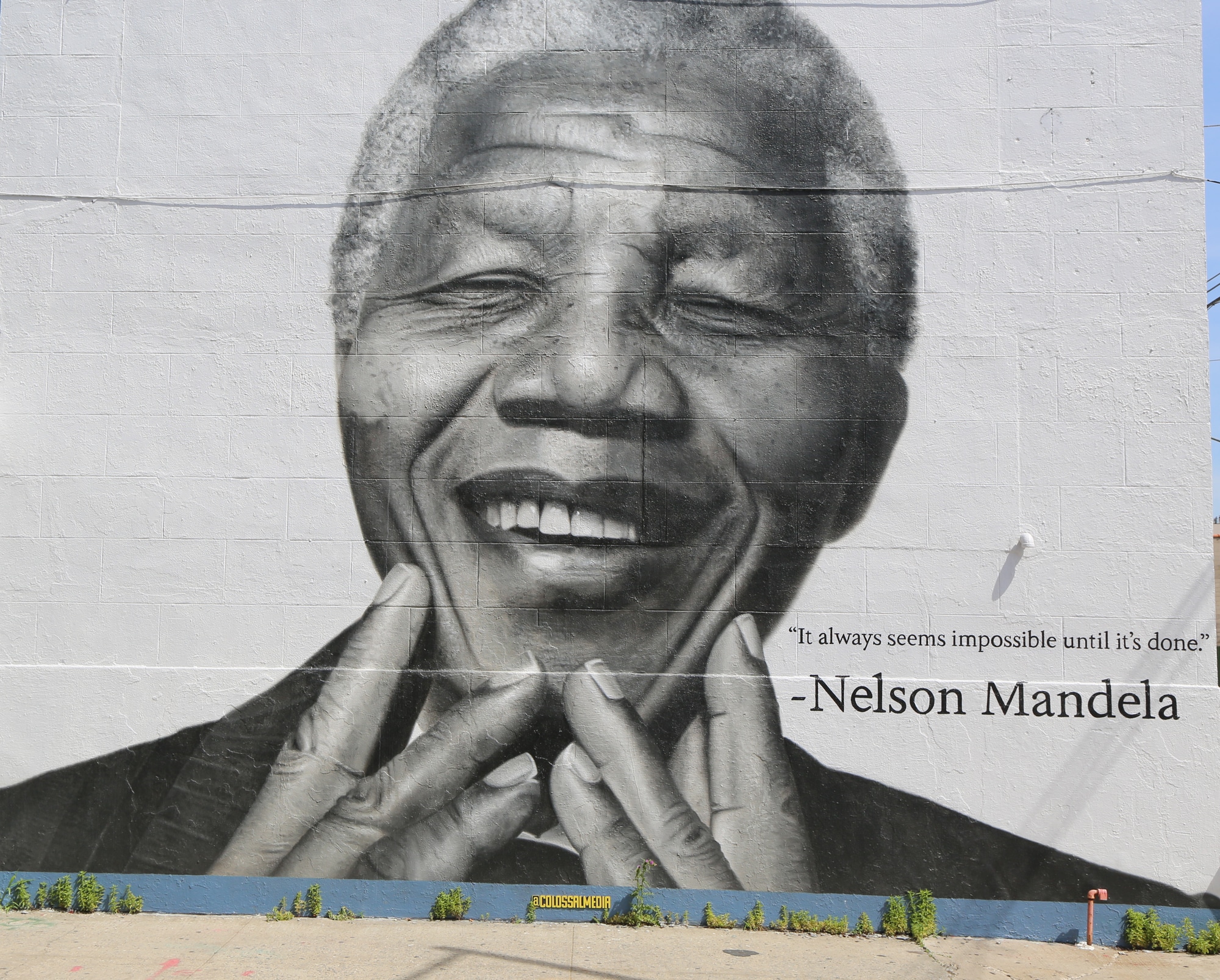
Biography of Nelson Mandela - a picture of Nelson Mandela
Facts about Nelson Mandela
- When Mandela was in prison, he became a symbol for the oppressed people of South Africa. It motivated them to fight against the cruel White minority government.
- Mandela is widely considered the father of modern South Africa. He played a significant role in converting an oppressed country into a democracy.
- Nelson Mandela won over 250 awards, besides the Nobel Prize.
- The United Nations announced July 18th, Mandela's birthday, as the Nelson Mandela International Day. The UN urges people to spend 67 minutes on this day doing something good for the people in need. The 67 minutes represent the 67 years Mandela worked hard in bringing change for his people.
We hope that this biography of Nelson Mandela helped you understand how he transformed South Africa. If you liked reading the biography of Nelson Mandela, you might like the following too:

